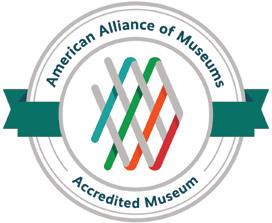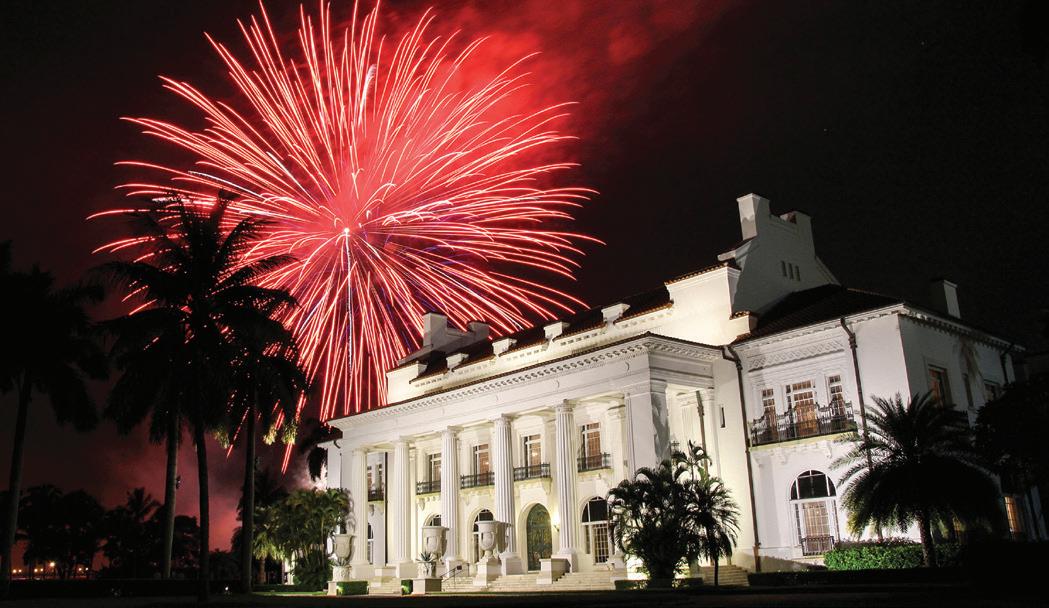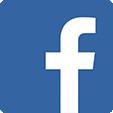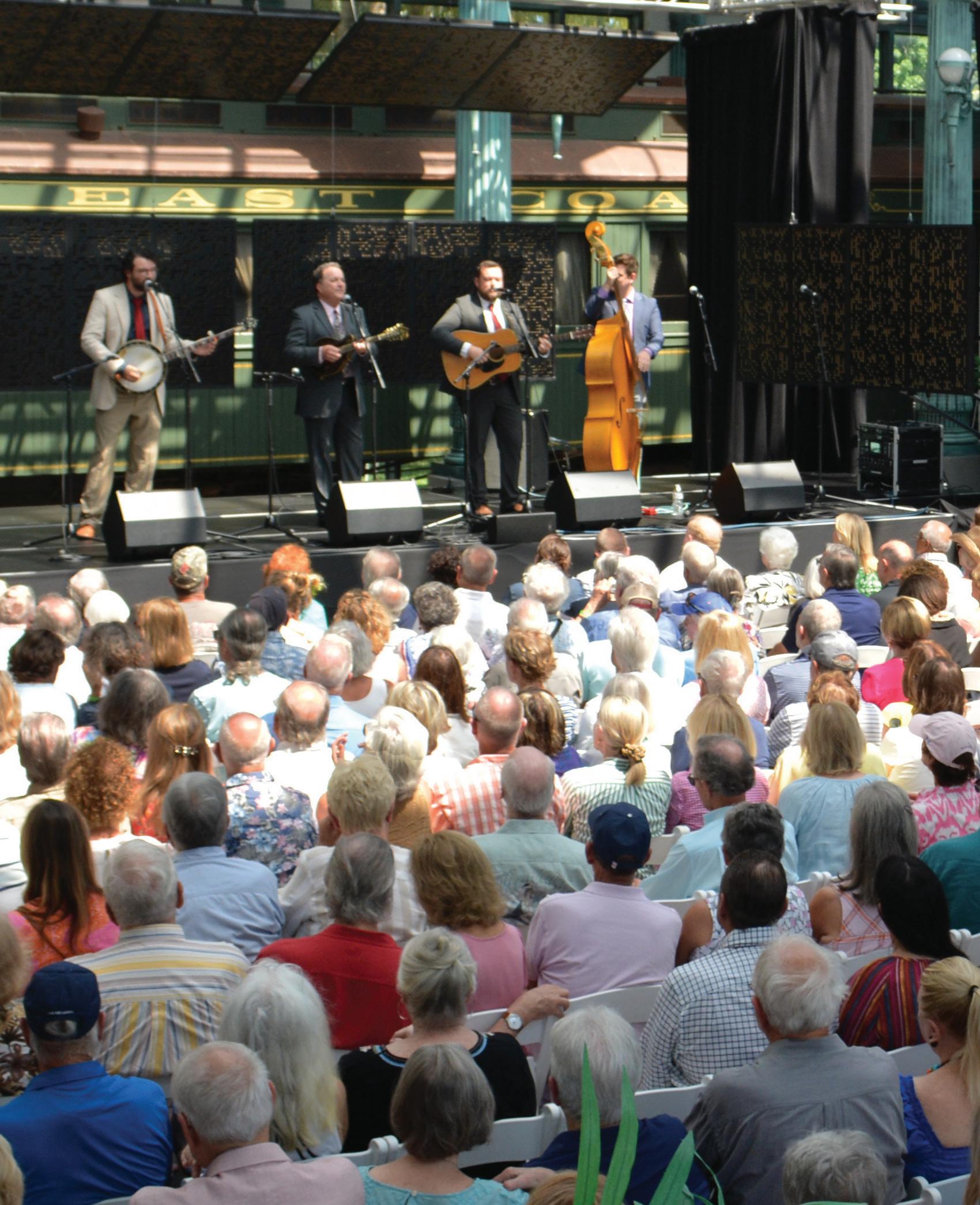The Magazine for Flagler Museum Members

2023
Number
TM
Summer
Volume Thirty •
Three Inside Whitehall
One Whitehall Way, Palm Beach, FL 33480 (561) 655-2833 www.FlaglerMuseum.us
Museum Hours
Tuesday - Saturday, 10 am to 5 pm Sunday, 12 to 5 pm
Closed Mondays, Thanksgiving, Christmas and New Year’s Day
Board of Trustees
Kelly M. Hopkins, President
G. F. Robert Hanke, Vice President
William M. Matthews, Treasurer
Thomas S. Kenan, III, Secretary
Ted A. Gardner, Trustee
Barry G. Hoyt, Trustee
Richard M. Krasno, Trustee
George G. Matthews, Trustee
Leadership Team
John Blades, Executive Director
Christina Bernstein, Director of Finance
David Carson, Public Affairs Director
Ben Hillman, Director of External Affairs
Mark Johnson, Store & Café Manager
Inside Whitehall is a Henry Morrison Flagler Museum publication © 2023 by the Henry Morrison Flagler Museum. All rights reserved.
Volume 30, Issue 3
Henry Morrison Flagler Museum, Inc. is a 501(c)(3) nonprofit corporation.


National Historic Landmark
Accredited since 1973 by

Although the Continental Congress voted in favor of a resolution of independence on July 2, 1776, the tradition has always been to celebrate America’s independence on July 4th, the date the Continental Congress formally adopted the Declaration of Independence, a document written primarily by Thomas Jefferson.

John Adams correctly predicted the anniversary of America’s declaration of independence would be “...celebrated, by succeeding Generations, as the great anniversary Festival. It ought to be commemorated, as the Day of Deliverance by solemn Acts of Devotion to God Almighty. It ought to be solemnized with Pomp and Parade, with Shews [shows], Games, Sports, Guns, Bells, Bonfires and Illuminations from one End of this Continent to the other from this Time forward forever more.”
While John Adams was correct in his prediction about the future of Independence Day celebrations, nearly all of the traditions associated with the Fourth of July, which we have known, and probably taken for granted our entire lives, were initiated during the Gilded Age.

follow us:



@flaglermuseum
#flaglermuseum
1776
Fireworks over Whitehall
Independence Day Celebration at the Flagler Museum
Tuesday, July 4th at 8:00 p.m.
Each Fourth of July, during this most American of holidays, Flagler Museum Members at the Sponsor level and above are invited to share an evening of activities filled with meaning and symbolism.

As Members arrive for the celebration they will find the Pergolas and walkway leading to the Flagler Kenan Pavilion decorated in bunting and lined with the flags of each American state and territory, in the order they joined the Union, culminating in the flags of each of the branches of the armed services arranged around the entrance to the Pavilion.
Each guest will receive a small American flag and souvenir program as they enter the Pavilion while a choir sings patriotic songs composed or made popular during America’s Gilded Age. The interior of the Pavilion is decorated with an example of each of the 20 versions of the American flag that flew over the country during Henry Flagler’s lifetime, as the number of states in the Union grew from 24 to 48.
The current 50-star version of the flag is the last in the series of 21 flags and is located in the northeast corner of the Pavilion’s upper level. Henry Flagler’s private Railcar, No. 91, is decked out with red, white, and blue bunting.
The evening’s festivities begin with the arrival of the Town of Palm Beach Police Department color guard bearing the American Flag and the Flag of Florida. The Declaration of Independence is then read in its entirety, as a reminder of just how important it was to the Founding Fathers to carefully enumerate and justify their grievances against the King of England. After all, they risked not just loss of property, but death, if their bold gamble to make America independent failed.
After the reading of the Declaration of Independence those in attendance join in the Pledge of Allegiance, which was distributed to schools throughout the Nation as a promotion for the World’s Columbian Exposition in 1893. No celebration of Independence Day would be complete without singing The StarSpangled Banner, which was formally adopted as America’s national anthem in 1916.
The event culminates with ice cream and lemonade enjoyed on the Pavilion Terrace as guests enjoy the best view of the fantastic pyrotechnics show over Lake Worth that provides the dramatic conclusion to the evening’s celebration.
For Membership information, call the Museum at (561) 655-2833 ext. 48 or visit www.FlaglerMuseum.us

Inside Whitehall - summer 2023 1
Declaration of Independence by John Trumbull. 1819. Architect of the Capitol.
Mixing It Up

The Flagler Museum, Northern Trust, and St. Augustine Distillery jointly hosted the Whitehall Society’s annual “Mixing It Up” cocktail party on board the Mansion Yacht during the recent Palm Beach International Boat Show. The event featured St. Augustine Distillery’s special Whitehall ReserveTM spirits and the unveiling of a very limited reproduction of Henry Flagler’s custom-made Tiffany & Co. cigar humidor, as guests enjoyed cocktails and hors d’oeuvres.



2
H. M. Flagler and Co. Museum Store Manager Mark Johnson, cigar humidor creator Daniel Marshall, and Museum Director John Blades.
Henry Flagler’s original humidor
Henry Flagler humidor reproduction Inside the reproduction
Henry Flagler’s humidor was a thank-you gift from the New York Yacht Club for the use of his yacht, Alicia, as the patrol boat, with Henry Flagler as captain, at the 1895 America’s Cup race. The cigar humidor is lined with sterling silver, and decorated with an engraved plate on the lid and enamel fittings. The wood is mahogany.
The Flagler Museum commissioned a reproduction humidor from Daniel Marshall, available in the H. M. Flagler and Co. Museum Store. Only ten Flagler Humidors were crafted by Daniel. The humidor comes with an autographed and slip-cased copy of Daniel Marshall’s book 38 Years. A numbered certificate from the Flagler Museum, supplies for keeping the humidor seasoned, two keys for the lock, and a copy of The Fish That Ate the Whale by Rich Cohen, which explains the fascinating legacy of the yacht Alicia.

For more information, visit the online store at www.flaglerandco.com or call (561) 655-2833 ext. 21.




 Daniel Marshall and Flagler Museum President Kelly Hopkins. Ben Hillman, Director of External Affairs, John Blades, Museum Director, Mr. Richard & Tammy Morgenstern.
Tonya Almallah and Jeremy William.
Daniel Marshall and Flagler Museum President Kelly Hopkins. Ben Hillman, Director of External Affairs, John Blades, Museum Director, Mr. Richard & Tammy Morgenstern.
Tonya Almallah and Jeremy William.
3
Philip McDaniel and Will Hensler, of St. Augustine Distillery.
Yachts of Henry Flagler
Like other titans of America’s Gilded Age, Henry Flagler enjoyed yachting and was a member of many yacht clubs, including the New York Yacht Club, where he registered his private signal flag or burgee. Flagler purchased Eclipse, his first yacht, around 1883, but he owned it only briefly. Eclipse was built by C.A. Willis in 1881 and its overall length was about 55 feet. Flagler’s second yacht, the schooner Columbia, was purchased in 1884. Built in 1871 for Franklin Osgood, Columbia became world famous when in that same year she successfully defended the America’s Cup, along with Sappho. Columbia was about 108 feet long with a beam of about 25 feet. She drew just over eight feet and displaced just over 100 tons.


In 1890 Henry Flagler decided to build his own new yacht, which he named Alice. She would be, by far, his largest yacht. Harlan and Hollingsworth of Wilmington, Delaware were commissioned to build a two-masted schooner, with a three-cylinder steam engine. Alicia’s overall length was 180 feet, her length along her waterline was 160 feet, her displacement was just over 300 tons, her beam was 24 feet, and her draft was 9 feet 6 inches.
At a cost of about $113,000, Alicia was a substantial investment. Flagler must have been proud of Alicia, as it was the only one of his yachts for which he commissioned a painting, which is now in the Museum’s collection.


4
Lapel pin of Flagler’s personal signal flag, or burgee. Flagler Museum Collection.
A painting by William G. Yorke that depicts America’s Cup champion Columbia in 1881, shortly before she was purchased by Henry Flagler. Flagler Museum Collection.
Painting of Henry Flagler’s steam yacht Alicia by Thomas Willis. Custom built in 1890 by Harlan and Hollingsworth of Wilmington, Delaware. Flagler Museum Archives.
Photography: A Glimpse into the Past
The invention of photography has provided a more comprehensive look into history. It is one of the many reasons the Gilded Age is such a fascinating era. Photography allows the viewer to further immerse themselves into the past, looking at moments frozen in time in such detail that wasn’t possible before, weaving complicated narratives about the subjects of their photos.
Photography has existed since the 1800s, first using a process called heliography, a method invented by Joseph Nicéphore Niépce. By using a Camera Obscura and a Pewter plate, Niépce created the earliest surviving photograph.

Thomas Edison filed for a patent on October 17, 1888, that described a device that would “do for the eye what the phonograph does for the ear.” Edison’s invention would be called the Kinetoscope, which could only be enjoyed by one viewer at a time.


Earlier methods of photography were impractical and could not lend itself to reprints or transportation through the mail. It was not until 1888 when George Eastman invented the Kodak camera, which used flexible rolls of film, that photography became more practical and open to the hobbyist. “You push the button and we’ll do the rest,” was a famous slogan by Kodak in 1888.
The next step in the photographic evolution was moving pictures. The concept of moving images began in the latter part of the 19th century. In 1879, Eadweard Muybridge invented the Zoopraxiscope to settle a bet on whether all four legs of a horse leave the ground while in a gallop. The attempt to capture it required the use of multiple cameras. The Zoopraxiscope was successful and proved that all four horses’ hooves do leave the ground in a gallop.
Although French-born inventor Louis Le Prince created the first viable motion picture camera, the recognition for the invention of the camera went to Thomas Edison and William Kennedy Laurie Dickson, an assistant working under Edison. Sadly,
5
Joseph Nicéphore Niépce. Point de Vue. 1827. Gernsheim Collection.
Edison’s greatest marvel - The Vitascope. 1896. Metropolitan Print Company.
Thomas Edison. circa 1800s.
Louis Le Prince disappeared while traveling in France before he could present his short films at an upcoming exhibition in New York City. The two short films Louis Le Prince made can be found online.

Another invention that added to the moving-picture experience soon followed called the Vitascope, or projector, granting the ability for entire crowds to watch a film rather than just one person at a time. A Vitascope displayed the image on a surface and allowed larger audiences to view the same film at once. The invention of the Vitascope led to the rise of the first movie theaters, or Nickelodeons as they were called in the early 1900s. The name Nickelodeon was a combination of two words, the cost of the show, a nickel, and the Greek and Roman word for a building that hosted shows, Odeon.
Early films were of simple day-to-day activities such as a train pulling into a station or people walking down a street. When film, camera, and techniques became more advanced, these short films started to incorporate multiple scenes, allowing for more intricate narratives. A French filmmaker, Georges Méliès, organized the Star Film Company and produced the influential 30-scene narrative Le Voyage dans la Lune (A Trip to the Moon).


The Great Train Robbery, produced by Edwin S. Porter, is widely regarded as the first narrative film to attain continuity between action scenes, in a more realistic manner versus the fantasy of Georges Méliès. These films also contributed to the rise of the first movie theaters and eventually the Nickelodeon boom when the number of theaters rose from a few handful in 1904 to the range of 8,000 to 10,000 by 1908.

 The Great Train Robbery. 1903. Edwin S. Porter.
The Great Train Robbery. 1903. Edwin S. Porter.
6
The First Theater, Tally’s Electric Theater. 1888 - 1908. Cinema Treasures.
Le Voyage dans la Lune. 1902 Georges Méliès.
Le duel d’Hamlet. 1900 A short film directed by Clément Maurice.
Stereograph of Henry Flagler

Film footage of Henry Flagler is near non-existent. However, a Stereograph of Flagler was discovered in a collection at the University of California where Henry Flagler was left as “unidentified”, sitting on the Sphinx Marble Benches along the walkway to Whitehall. The Stereograph was very popular
during the Gilded Age and was a common fixture in many homes as a means of entertainment. People would bring and share their own stereographic images.
Museum Update: New Kiosks


The Flagler Museum installed new General Admission and Member kiosks at the front gate in April 2023. The new kiosks replaced the former kiosks, adding more efficient air conditioning units and an improved ticket purchasing experience.


7
New admission kiosks are installed at the main gate.
Henry Flagler. University of California collection.
Easter Egg Hunt


Nearly 1,000 attendees came to Whitehall’s Annual Easter Egg Hunt. Families and children of all ages enjoyed the traditional Easter Egg Hunt on Museum grounds the Saturday before Easter. Treat-filled eggs were “hidden” on the Museum’s lawn as well as in the Cocoanut Grove. Areas were sectioned-off by age group so that all children, including toddlers, had the opportunity to participate safely.


Bluegrass in the Pavilion


8
The Larry Stephenson Band and Joe Mullins & The Radio Ramblers headlined the 2023 Bluegrass in the Pavilion Concert for its 18th season. Almost 400 attendees enjoyed an afternoon of entertainment.
Joe Mullins & The Radio Ramblers (left) and the Larry Stephenson Band (right)
Blue Star Museums Program


May 20 to September 3, 2023
Free admission for Active-Service Members and Family
Blue Star Museums is a partnership between the National Endowment for the Arts and Blue Star Families, in collaboration with the Department of Defense and museums across America, offering free admission to the nation’s active-duty military personnel. The offer is extended to National Guard, Reserve, U.S. Public Health Commissioned Corps, and NOAA Commissioned Corps.

The 2023 Blue Star Museums program began on Armed Forces Day, Saturday, May 20th and ends on Labor Day, Monday, September 4th (the Museum is closed on Labor Day).
Armed Forces Day was established in 1949 for citizens to come together and thank military members for their service.
Qualified service members must show a Geneva Convention common access card (CAC), DD Form 1173 ID card (dependent ID), or a DD Form 1173-1 ID card for complimentary admission.
Picnic in the Cocoanut Grove
While the Café des Beaux-Arts is closed for the season, the Museum’s Picnic is available for purchase in the H. M. Flagler and Co. Museum Store and can be enjoyed outside in Whitehalls’ Cocoanut Grove, where tables and chairs offer respite in the shade of palm trees.

The Picnic menu options include a Tuscan Grilled Chicken Sandwich Box, Charcuterie Platter, and Hummus Box. Beverage choices include lemonade and iced tea from Harney & Sons.
For dessert, Lavender Cookies, which are inspired by Victorian-era tea cakes, and Poinciana Cupcakes are available. The menu is subject to change.

9
Henry and Mary Lily host afternoon tea in the original Cocoanut Grove. Flagler Museum Archives.
Founder’s Day


Monday, June 5, 10:00 a.m. - 5:00 p.m. Free Admission
On June 5th each year the Flagler Museum celebrates the anniversary of its founding by opening to the public free of charge in honor of the Museum’s founder, Jean Flagler Matthews.



Whitehall was built by Standard Oil partner Henry Flagler in 1902. Flagler spent winters in Palm Beach with his wife Mary Lily until his death in 1913. Flagler’s granddaughter, Jean Flagler Matthews, rescued the estate from demolition and established the Flagler Museum on June 5, 1959.
Self-guide tour brochures, in five languages, are available to lead guests through Whitehall’s first and second floors, as well as Railcar No. 91 in the Flagler Kenan Pavilion.
Organ and Piano
Demonstrations
Sundays at 3:30 p.m.
September 3rd through November 19th
Included with general admission
On select Sundays in September, October and November, visitors may enjoy the sounds of the
These two original instruments will be played by local musicians as part of the Museum’s conservation program. A variety of popular music will be performed including secular and spiritual pieces published or composed during the Gilded Age.
10
Call the Museum at (561) 655-2833 or visit the website at www.FlaglerMuseum.us/programs for more information on dates
1902 J. H. & C. S. Odell & Co. organ in the Music Room and the 1901 Steinway and Sons model B art case grand piano, each commissioned specifically for Whitehall.
The Standardization of Time

Urban life was redefined with the invention of the clock, and the public started to view time as a commodity. Daily life became more complex as dependence on the measurement of time grew. An alarm to wake up, a time to go to work, or school, a time to go home, and a time to go to sleep. Time began to be treated as something that could be wasted or lost, even indicating a monetary cost associated with time.
Before 1883, time zones did not yet exist. Towns kept their own time based on when the sun was highest in the sky, known as high noon. When transportation inevitably became faster and more efficient, travel time was reduced from months to mere days, or even hours. Time-keeping for each town became a scheduling problem, and calculating consistent, accurate time became complicated. In order to keep track of the time when traveling, a person would have to change their watch by one minute for every 12 miles traveled, east or west, in order to have the correct time.
With the advent of a national railroad system, keeping standardized time across the country became essential to safe operations. For example, on April 19, 1891, the pocket watch of a train engineer failed, stopping for four minutes, before restarting. The four-minute time difference resulted in a crash in Kipton, Ohio that claimed the lives of nine people. A commission was established to create new standards for the railroad pocket watch.
The specifications of the new watch requirements included: a white face, accurate within 30 seconds per week, black Arabic numerals with each number delineated, in size 16 or 18 point font, adjustable to five positions, and temperature compensated. These newly introduced standards insured that the pocket watches carried by rail workers achieved the utmost accuracy that could be achieved with a mainspring-powered watch. These watches still required winding at least once a day. As an added precaution, a lever was added that needed to be operated in order to set the time, so no accidental changes were made.

Railroad managers of the day further addressed time-keeping and scheduling problems by dividing

the continent into four different time zones. The U.S. Naval Observatory agreed to abide by the railroad manager time zones and at 12 p.m. on November 18, 1883, the Observatory signaled the nationwide change. When the telegraph arrived that signaled the change to Greenwich Mean Time, the official time used by the Naval Observatory, people nationwide changed their clocks to match their time zone. As a result, the issues with confusing train scheduling were largely resolved.
However, it was not until 1918 that Congress officially adopted the railroad time zones. The dividing lines adopted then have moved more Westward since the 1800s. Initially, Florida was in the central time zone but sometime after 1913, became a part of the Eastern time zone.
When Standard Time for railroads was adopted, high quality Standard Clocks were installed in railroad stations and executive offices, providing reliable time references for employees. One of the most popular station clocks, the Seth Thomas Regulator No. 16, was produced between 1875 and 1910 and sold for $125.00, a high price tag for the time. One of these is on display in the Museum’s History Room.
11
Navy Yard officials set a clock to the official time in Brooklyn, New York. 1890. Library of Congress.
Hamilton 21 Jewel Railroad Grade 992 Pocket Watch. Chronified International.
New and Renewing Members
March 11 - June 2, 2023
Legacy Members ($15,000)
Mrs. Lynn Donovan
Mr. Albert Douer
Mr. Alex Fanjul
Mrs. Michelle Morgan Ketchum
Mr. Mark C. Matan
Mrs. Michelle S. Weiss
Ms. Taylor Wilson
Flagler Associate Members ($5,000)
Mrs. Robert T. Butler
Patron Members ($1,000)
Mrs. Hella G. Buch
Mr. Boris Cherney & Mrs. Prina Chernaya
Mr. & Mrs. Frederick L. Cone
Mr. & Mrs. David Frisbie
Mr. Richard Kramer & Ms. Meredith Hope
Dr. Eleanor Laudicina & Dr. Robert Laudicina
Mrs. Helen Jeanne Nicastri & Mr. Brian Thompson Burry
Mr. & Mrs. Dack Patriarca
Ms. Ruby S. Rinker
Mr. & Mrs. Michael Wilburn
Sponsor Members ($500)
Dr. Robert J. Desnick, MD & Mrs. Julie Herzig Desnick
Ms. Virginia I. Laytham
Dr. Giselle Parry
Ms. Deborah Pollack
Mr. & Mrs. Charles M. Royce
Family Members ($300)
Mr. & Mrs. Clarence Anderson
Mr. & Mrs. Kenneth S. Beall, Jr.
Mr. & Mrs. James Davis
Mrs. Susan Efron
Mr. & Mrs. Stan Mark Godoff
Mr. & Mrs. Murray H. Goodman
Mr. & Mrs. Owen Gwyn, Jr.
Mr. & Mrs. Eric M. Javits
Mr. Brendan Joyce & Mrs. Haley Joyce
Mr. & Mrs. Erik Larson
Ms. Maureen Lawrence
Mr. & Mrs. Michael Masteron
Ms. Susan Meyer
Mr. & Mrs. James L. Nederlander
Mr. Justin Simcock
Ms. Deborah Singer
Mr. & Mrs. David L. Wagner
Mr. & Mrs. Richard Whiting
Individual Members ($150)
Dr. Carl Anderson
Ms. Diane Andrica
Ms. Francesca Bon
Dr. Bunny J. Bucho
Ms. Leanne R. Chambers
Mr. Nicholas Christodoulidis
Ms. Frances D. Cook
Mr. John Franklin Cooney
Ms. Carmela Disorbo
Dr. Marcia W. Hemley
Ms. Sandi Lutz
Mr. James R. Maus
Mr. Neal Milligan
Ms. Pamela Acheson Myers
Mrs. Kayelynne Northcutt
Ms. Kip O’Brien
Mr. Phil Pepe, Jr.
Mr. H. Rick Prudden, Jr.
Ms. Christina A. Warner
Ms. Patricia Walker
Educator Members ($75)
Ms. Judy Christodoulidis
Ms. Danielle Dominguez
Ms. Rosey Vassilatos-Gekas
Whitehall Society ($800)
Mrs. Leslie Whitman
Corporate Memberships
Chairman ($15,000)
Provident Jewelry
CEO ($10,000)
Athene Annuity and Life Company
12
Contributors, Sponsors & Grantors
March 11 - June 2, 2023
$40,000 and above
Palm Beach County Board of County Commissioners, Palm Beach County Tourist Development Council, and the Cultural Council for Palm Beach County
$15,000 and above
Mr. Thomas S. Kenan, III
$2,500 and above
Curtis & Amanda Polk Charitable Fund
$1,000 and above
Mr. Peter R. Kellog Trust
$100 and above
Dr. Bunny J. Bucho
Mr. & Mrs. Jerry Suchman
Ms. Lois Forman
Mr. Ronald Risner
You can make a lasting difference for generations to come by remembering the Flagler Museum in your estate plan. If the Museum can be of any assistance to your attorney or estate planner, please have them contact the Museum’s Executive Director at the Museum’s main telephone number or via e-mail at executivedirector@flaglermuseum.us.

Visitor Feedback
“Magnifique, très intéressant superbe”
Nicolas W.
“Absolutely marvelous. Full of history. Great for families.”
Silvia S.
“Fascinating and interesting tour by the docent of my tour. Incredible history, art, architecture, and curation.”
Sumit D.
“A really stunning museum. The details in this house are truly overwhelming.”
Kristin K.
“Wonderful Experience.”
Ivan F.
Museum Members at the Sponsor level and above were invited to the Winter Exhibition Opening Reception.
FL AGLER MUSEUM
Schedule of Upcoming Events
Blue Star Museums Program

Saturday, May 20 to Sunday, September 3
In appreciation of the United States armed forces, the Flagler Museum is offering free admission to active-duty military and their direct family members.
Founder’s Day
Monday, June 5, 10:00 a.m. - 5:00 p.m.
Celebrate the anniversary of the Flagler Museum with free admission, in honor of the Museum’s founder, and Henry Flagler’s grand-daughter, Jean Flagler Matthews.
Independence Day
Tuesday, July 4, 8:00 p.m.
Flagler Museum Members at the Sponsor level and above are invited to the Flagler Kenan Pavilion to enjoy the fireworks display over Lake Worth. Now is the perfect time to upgrade your Membership to Sponsor level or above to enjoy this event.
Organ and Piano Demonstrations
Sundays at 3:30 p.m. September 3 to November 19.
Whitehall’s original 1,249-pipe J.H. & C.S. Odell Co. organ, located in the Music Room, and the Steinway Model B art-case grand piano, located in the Drawing Room, can be heard at 3:30 p.m. each Sunday afternoon through November 19th. The brief demonstrations serve to exercise the instruments and showcase popular music of the Gilded Age.
For more information, please call (561) 655-2833 or visit www.FlaglerMuseum.us

A National Historic Landmark One Whitehall Way Palm Beach, Florida 33480 www.flaglermuseum.us
h e n r y m o rri s o n palm beach, florida Nonprofit Organization U.S. Postage PAID West Palm Beach, FL Permit No. 1831


















 Daniel Marshall and Flagler Museum President Kelly Hopkins. Ben Hillman, Director of External Affairs, John Blades, Museum Director, Mr. Richard & Tammy Morgenstern.
Tonya Almallah and Jeremy William.
Daniel Marshall and Flagler Museum President Kelly Hopkins. Ben Hillman, Director of External Affairs, John Blades, Museum Director, Mr. Richard & Tammy Morgenstern.
Tonya Almallah and Jeremy William.









 The Great Train Robbery. 1903. Edwin S. Porter.
The Great Train Robbery. 1903. Edwin S. Porter.

















